Bluetooth Transmitter for TV (Headphones). What is it, how its and How to Choose?
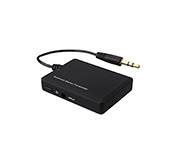
The main problem people face is that the TV doesn’t have Bluetooth, or it does, but the TV won’t let you connect headphones. Even if the TV has a Bluetooth module, it is often designed to connect only certain devices or branded accessories. And it is impossible to connect headphones to such a TV. He either simply does not see them, or there is some error in the connection process.
Using wired headphones with the TV is very inconvenient. And besides, more and more TV manufacturers are abandoning the usual 3.5 mm Jack output. Why they remove this output and limit the work of the built-in Bluetooth module is not clear to me. But judging by the comments to other articles on this topic, people actively use (or want to use) headphones when watching TV. It is understandable, because by plugging in headphones, you can watch TV or play on a console without disturbing others. But TV manufacturers are doing everything to make the process of connecting wireless headphones to the TV as easy as possible. And impossible without additional devices.
In this article we will talk about Bluetooth transmitters – devices that can receive sound from the TV through the same 3.5 mm Jack, RCA (tulip), or optical audio output and transmit it via Bluetooth to any headphones, speaker, speaker system, soundbar, home theater, etc.
In order not to write an article about devices that I myself have never seen or configured, I ordered two Bluetooth transmitters on Aliexpress. One cheap one for $2.84 (VIKEFON) and another much more expensive and functional one for $25.29 (CSR8675 APTX HD).
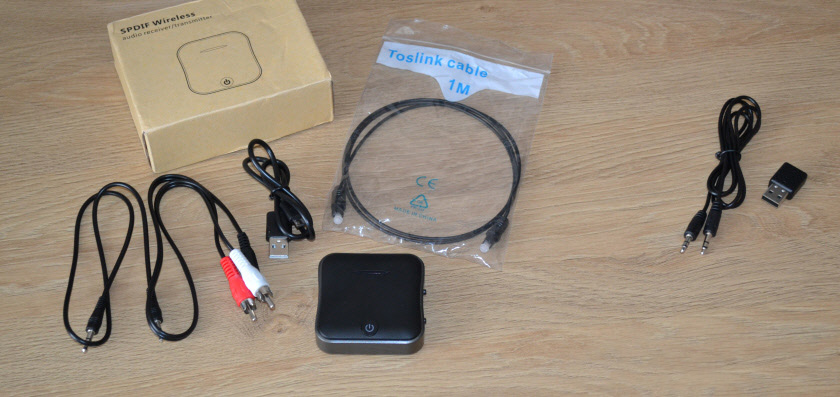
I’ll show both transmitters in more detail in this article and talk about them. I’ve already got everything hooked up, set up, and tested. Everything works, but there are many nuances. I will tell you about setting up the Bluetooth transmitter on the TV and connecting Bluetooth headphones to it in a separate article. I also want to note that these devices are just a huge number of not only in Chinese online stores, but also ours. All of them are very different and differ greatly in their functionality and, accordingly, the price. There are even branded devices from popular manufacturers that cost some unrealistic money. Of course, it is unrealistic to test all the transmitters that are on the market. But on the example of these two devices, which I will tell you about in this article, you will be able to understand what these devices are, how they work, and what functions they can perform. And also we will find out what is the difference between a cheap Bluetooth transmitter and an expensive one and how to choose such devices among the huge number of them on the market.
What is a Bluetooth transmitter and what is it for?
As a rule, these are compact devices with built-in Bluetooth module and different audio inputs/outputs for connecting to different sound sources (TVs, computers, phones) or to devices that are designed to output sound (speakers, loudspeakers, music centers, stereos, etc.). All these devices differ not only in technical characteristics, but also in appearance. Here are some of them:

The main differences between different models of Bluetooth transmitters:
- Support for different connection interfaces. For example, there are transmitters that connect only through the usual 3.5 mm Jack. And there are models, which in addition to the 3.5 mm jack has RCA (tulip) and optical audio input/output.
- The presence or absence of a built-in battery.
- Bluetooth versions.
- Ability to connect multiple Bluetooth headphones or speakers.
- Quality of the Bluetooth module, availability of different control interfaces, build quality, cables, etc.
If I understood correctly (I may be wrong, as it is unrealistic to check all devices), all Bluetooth transmitters on the market can work in the mode of reception and transmission (2 in 1). As even my cheapest adapter can both receive sound via Bluetooth and transmit it to the same speaker system, and transmit sound via Bluetooth (from TV, PC) to headphones, or other device. These modes are usually called TX Mode and RX Mode.
- TX is the transmitter mode. When a Bluetooth transmitter takes sound from the same TV through a specific interface (cable) and transmits it to your headphones via Bluetooth. These devices are most often used in this mode of operation.
- RX – receiver mode. When we connect to the transmitter via cable to the usual speakers, music center, car stereo (via AUX), or other device for sound output. Then from a phone, tablet, laptop or other device we connect to the transmitter via Bluetooth and broadcast music. It turns out that we have added Bluetooth support for regular speakers.
The picture below shows how the two modes work:

Even my cheapest transmitter with no problem (almost no problem :)) works in two modes. On receiving and transmitting sound over Bluetooth. Except that the way of switching between modes on different transmitters is very different.

If the expensive one has a separate TX/RX switch, the cheap one has no buttons at all. And the mode change is done by connecting, disconnecting and reconnecting the device to the power source. In the receiver mode the indicator blinks blue, and in the transmitter mode – red. Without the manual (which, by the way, was not included in the package) it is unreal to guess. Good at least in the product description on Ali it is written about it.
Example of use #1
This example shows the operation in the transmitter mode (TX). We have a TV without Bluetooth (or Bluetooth is available, but headphones are not connected), and we need to connect wireless headphones. We connect the transmitter to the TV with an audio cable. If your TV has a 3.5 mm headphone output, we use it. In mine, for example, there is no 3.5 mm jack. Therefore, I connect via optical audio output. You can also use RAC (RAC ). Even old TVs have it. It is very important to take this into account when choosing this device. You also need to connect power to the transmitter. I plug it into the USB port on the TV. If there is no USB, you can use any adapter that we use to charge the phone.
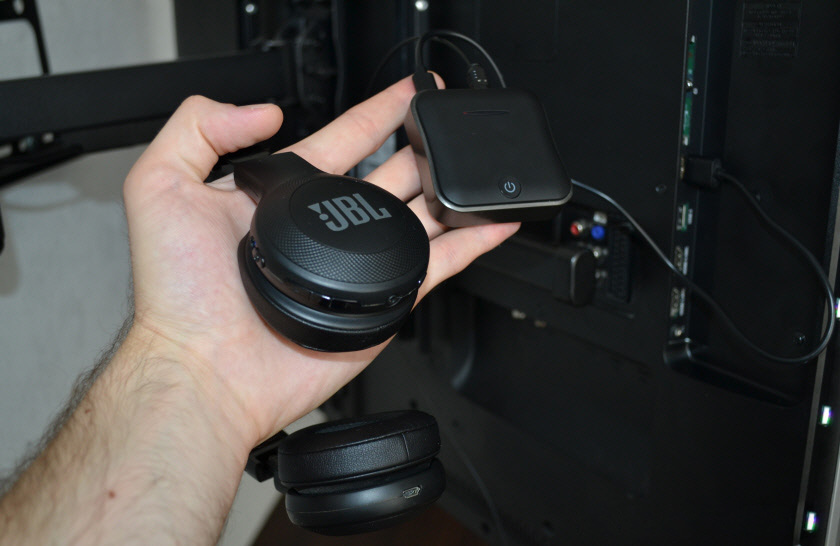
After powering up the transmitter, you need to connect Bluetooth headphones to it. Usually, it is enough to put the headphones in the connection mode. The connection method may be slightly different, depending on your transmitter and headphones. Once connected, the sound goes to the headphones. To the more expensive model, you can connect two pairs of headphones at once. In the case of connection to the TV via optical audio output, the sound is also simultaneously played from the TV speakers. But it can be simply disconnected, or twisted on the TV. Then the sound will be played only through the headphones. There is a slight delay between the sound from the TV speakers and on the headphones through the transmitter.
Usage Example #2
This example shows the operation in receiver (RX) mode. We have a regular speaker system without Bluetooth. But we want to stream music to it from a phone or tablet. Or even from a laptop or PC, but we don’t have the ability (or desire) to connect the speakers to the computer via cable. We take a Bluetooth transmitter and connect it to the speakers. Here you can use either 3.5 mm Jack, RAC or optical audio cable. Depending on what connectors you have on your transmitter and speakers. You also need to connect power to the transmitter. Power can be taken from the USB port of any device, or through an adapter.
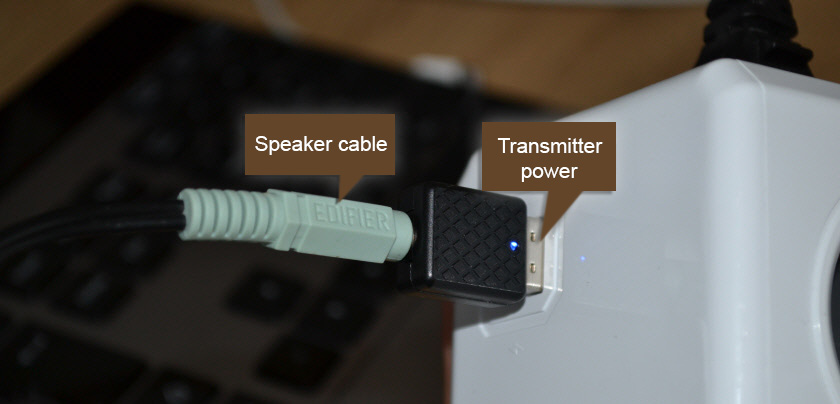
Switch the transmitter to the receiver mode (RX). In this mode it is available for detection on all devices (phones, laptops). We turn on Bluetooth, for example, on the phone, and connect to the transmitter (the instructions should include its name). The phone, or other device detects it as headphones and outputs sound. And the transmitter in turn transmits the sound to the speakers via cable.
How to choose a Bluetooth transmitter?
First of all, you should understand why you need it and how you will use it. For example, if you choose a Bluetooth transmitter for TV (to connect headphones), then you need to find out what connection options are possible specifically on your TV. This is the main thing.
What to pay attention to when choosing:
- On the connection interfaces. In most cases, a transmitter with the ability to connect via the usual 3.5 mm Jack or RCA (tulip) is enough. There are just different cables. And when ordering there is usually an opportunity to choose a particular cable, or order both cables. More expensive models are also equipped with optical audio input/output. And if your TV has an optical audio output (Digital Audio Out), I would advise you to buy a model with support for this interface. Here is an example of a cheap model with only 3.5 mm Jack and RCA support (RCA cable was not included, but you can choose it when ordering):
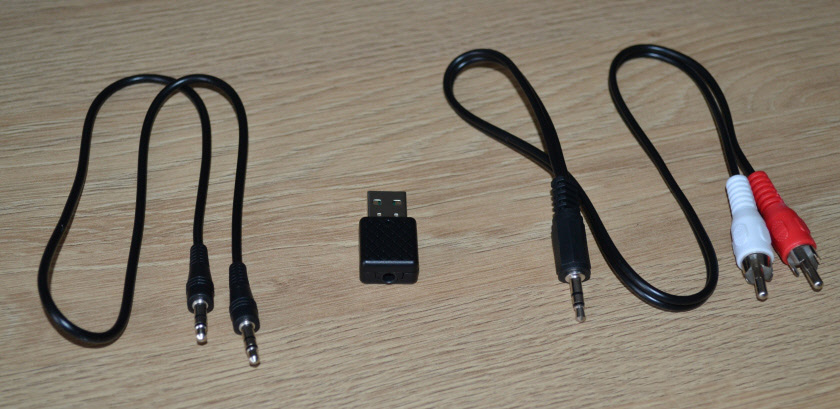 And the expensive model has support for optical audio cable. Well, and accordingly, all cables are included.
And the expensive model has support for optical audio cable. Well, and accordingly, all cables are included.
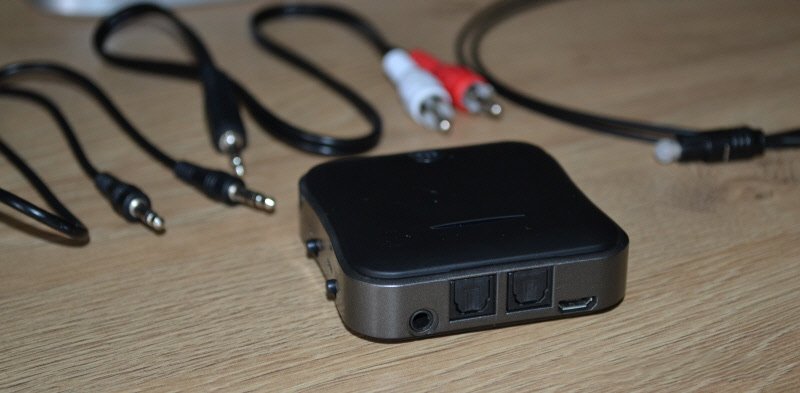 The transmitter itself has an optical input and output: SPDIF IN TX and SPDIF OUT RX. And on the case there is a switch SPDIF/AUX. Which you need to put in a certain mode, depending on which cable you use to connect to the source of sound output, or to the device to which the sound will be output.
The transmitter itself has an optical input and output: SPDIF IN TX and SPDIF OUT RX. And on the case there is a switch SPDIF/AUX. Which you need to put in a certain mode, depending on which cable you use to connect to the source of sound output, or to the device to which the sound will be output.
 If you take a device with three cables (Optical + RCA + 3.5 mm), you will definitely be able to find the right interface to connect to your TV or other device.
If you take a device with three cables (Optical + RCA + 3.5 mm), you will definitely be able to find the right interface to connect to your TV or other device. - Do not buy the cheapest devices. I’ve personally made sure of this. My transmitter (which is cheap, for 3 dollars), is terrible at outputting sound to headphones. You can hear noise and crackling during playback. Tried changing the power adapter – didn’t help. While in the opposite direction, from the phone to the speakers it outputs sound without interference. Headphones are tested on different devices, the problem is not in them. Perhaps, I just got a marriage. Also in cheap models can be a strong delay in the broadcast of sound (because of cheap Bluetooth module). And the sound will lag behind the image on the TV. From the cost of these devices strongly depends on the quality of sound and the quality of the device as a whole.
- If you need to connect to the TV through the transmitter more than one pair of headphones at the same time, then be sure to find out before buying whether the model you choose gives you this opportunity. In my case, only one pair of headphones can be connected to a simple and cheap transmitter. To the expensive model – two pairs of headphones at the same time. I tested it, it works. I connected headphones and a speaker at the same time. But the connection process is very complicated. Especially when the instruction is in English and it’s too lazy to translate it.
- As for the Bluetooth version, take devices with the latest version. I have both with Bluetooth 5.0. On the headphones, if I’m not mistaken, Bluetooth 4.1. Everything works. They are compatible with each other.
- There are Bluetooth transmitters with NFC. I don’t have one, so I can’t test it. But according to the idea, NFC support is needed for easier connection of headphones, speakers, phones and other devices, which, of course, also have NFC support. Since the process of connecting headphones and similar devices to the transmitter is a lot of work, having NFC is a great solution.
- I’ve seen transmitters with external antennas. In their characteristics it is stated that the range of action in the room increases to about 30 meters. In the usual range of 10 meters. I have not had to work with such models, but if you have a large house or apartment, or some special tasks, then this option may suit you. In the usual case, I do not see the point of overpaying.
- Built-in battery. Frankly speaking, I don’t quite understand why it is needed. For my transmitter, the manufacturer claims a battery life of 24 hours. But why? It’s probably easier to plug in the power than to think about charging another device. Although, perhaps in some situations the possibility of autonomous work may come in handy.
Study the specifications carefully. It always says what comes with the device, what cables, what connection options are available, how many devices can be connected via Bluetooth at the same time, etc. Read reviews.
Conclusions
Interesting and useful devices. You can think of many ways to use them. But the main one is connecting wireless headphones to the TV. Especially since even in new models of TVs, which of course are equipped with Bluetooth, manufacturers for some reason limit the connection of headphones.
Everything connects and works even in the case of a $3 transmitter. But I would not recommend buying such devices. All because of very poor quality and a high probability of getting a defective device. In addition, the process of connecting such devices is not the easiest and most understandable. On more expensive devices everything is realized a little easier. There are buttons and switches.
Buying a Bluetooth transmitter be prepared to spend a little time to figure out how to connect and configure everything. Read the instructions on the online store’s website. Use your phone (camera in Google Translate) to translate the instruction that comes with the kit (if there is one). In the case of connection to the TV, there may be some inconvenient moments with switching the sound from the TV speakers to the headphones and in reverse order. Much depends on the way the transmitter is connected to the TV and on the TV itself.

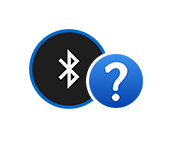 How to make a bluetooth on a computerun it is not?
How to make a bluetooth on a computerun it is not?  Wireless Headphones Blink Red, Blue, White, Pink. Burn in Red. What to do?
Wireless Headphones Blink Red, Blue, White, Pink. Burn in Red. What to do?